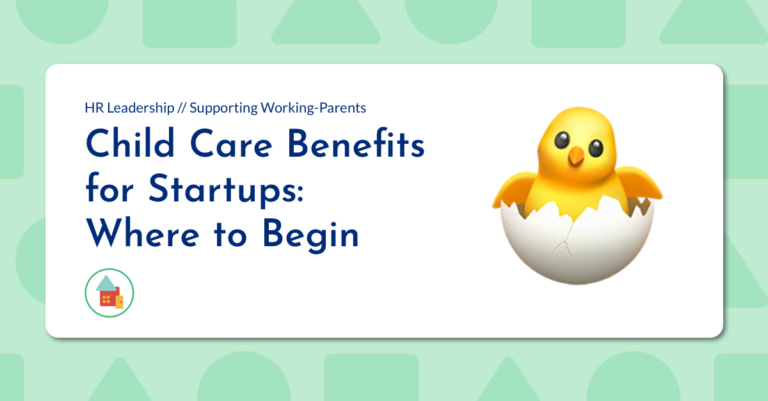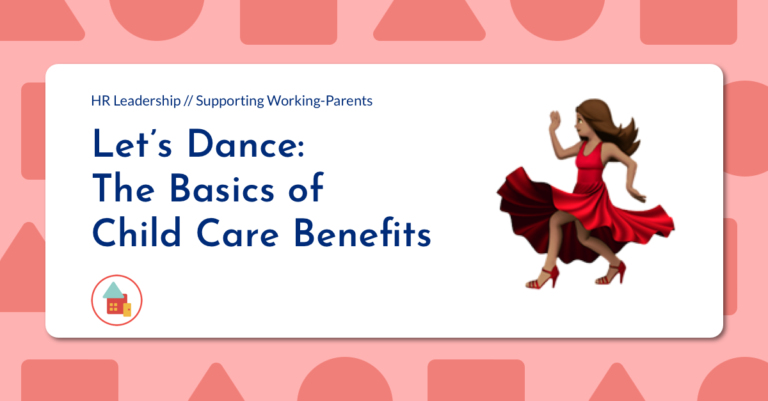This is the third post in our series for HR leaders about how to help working-parents find child care during Covid-19. So far we’ve discussed why work-from-home and pandemic-parenting don’t mix, when and where your employees actually need child care, and we touched on the importance of affordability. Today we’re going deeper on affordability and why it matters, because this is where HR leaders report the most confusion – how to support the full breadth of their workforce with child care options and benefits they can afford. By the end of this article you’ll understand why affordable child care is key to supporting and retaining working-parents and be able to assess your company’s current supports using the Child Care Benefit Equity Calculator.
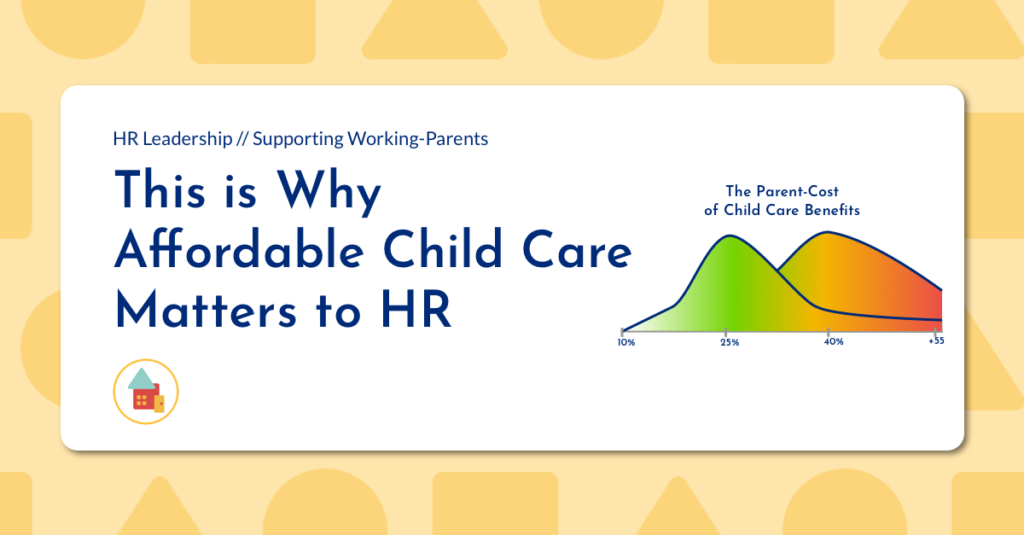
Why Affordability Matters
First question, why does affordable child care matter to you, the employer?
Whether they’re talking to you about it or not, each of your employees has a tipping point when it comes to the cost of child care. For many, returning to work after parental leave is an emotionally tough decision to begin with. Then, on top of that, child care can be incredibly expensive, and parents pay for that cost out of their after-tax earnings. The deeper that cost cuts into their bottom line, the less they’re willing to deal with the stress of leaving their child every day to juggle working parenthood. No matter how much you think your employees love you, at a certain cost people start to question why they’re working at all.
Statistics from Massachusetts show just how real this issue is. According to a recent report by the Council of Economic Advisors, center-based infant care costs a median income parent 48% of their pre-tax income. And after taxes?
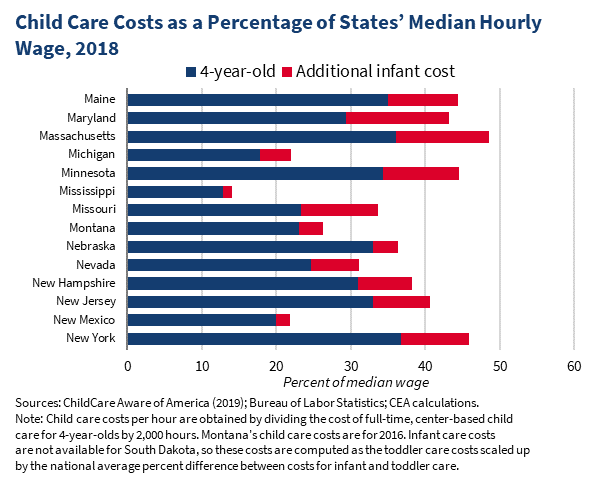
Yes, you read that right. This is why 57% of women still leave the workforce after the birth of their first child. If employees can’t find affordable forms of child care, they can’t afford to work. So when we’re talking about supporting and retaining top talent the cost of child care cannot be ignored.
As a HR leader, you have the power to effect change. Just as you choose health insurance programs that prioritize your team’s health and well-being, by choosing child care benefits conscientiously, you can have a profound impact on your employees and their families. How?
The smart move is to identify the most affordable child care options for your team, and then align your child care benefits to support those options. Remember, while child care is expensive, certain forms of child care cost parents significantly more than others, and it’s your job to help them find the options that match their income level and job requirements.
Affordability & Equity
The first step is to understand your current situation. Specifically, what child care options do you currently support, and how well do these align to your workforce?
The truth is that some traditional child care benefits out there disproportionately benefit high-income employees. Nanny-placement agencies or expensive center-based care options may benefit the top echelon of earners but leave the majority to figure it out on their own. This introduces the issue of benefits-equity. Different divisions within your organization have different levels of compensation, and there are working-parents at every level that need affordable child care in order to continue to work for you.
Through our work with HR leaders we developed The Child Care Benefits Equity Calculator. Using this diagnostic tool, HR leaders can quantify, visualize and understand their current situation, and then measure the impact of potential changes to the child care benefits. HR teams, especially those looking to add supports in response to Covid-19, have found this to be a valuable starting point as they evaluate options.
While child care is expensive, certain forms of child care cost parents significantly more than others. HR needs to identify and support child care options that match the income and job requirements for every division.
The Child Care Benefits Equity Calculator
At a high level, there are four steps to use this tool:
- Map Your Population: First, assess the distribution of after-tax income of working-parents for each major division of the organization. For each segment, calculate the median value and note its proportion of the total.
- Calculate the Parent-Cost Ratio: For each segment, calculate the parent-cost ratio of the child care options supported by current benefits. Note: for full-time employees, these costs should reflect the full-time child care options you support with benefits.
- Chart Population Segments: Plot the parent-cost ratio for each segment on a curve, weighted by that segment’s percentage of the whole. Note, to get a smooth curve, you’ll need more granular data, one step below the division level, but this is a good back-of-the-envelope exercise to begin.
- Find the Median: Look at the resulting chart and determine what percentage of your workforce have child care benefits with a parent-cost ratio under 25%? Under 40%?
What most teams discover is a distribution that looks like this, with the majority facing a parent-cost ratio over 40%. This visualization helps us understand the magnitude of the problem and motivates us to find alternatives. This puts your employees at risk of that tipping point we discussed earlier: at 40 – 50%, many are going to start to question whether the work is worth the stress. If you don’t currently have young children, imagine paying 50 cents of every dollar for child care? If you’re not helping your parents find more affordable forms of child care, that’s what they’re up against.
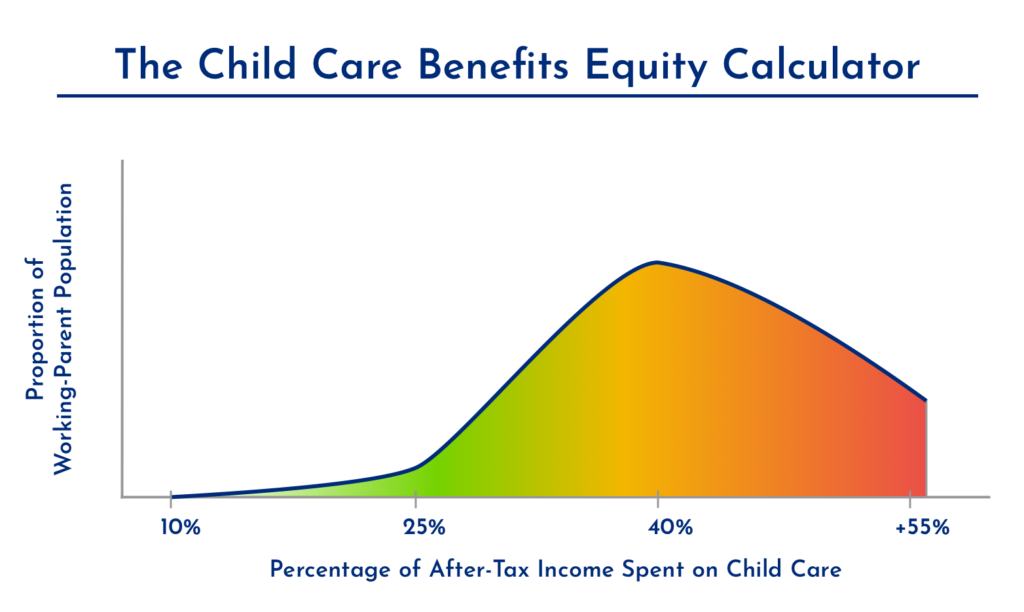
Shifting the Curve
By investing in affordable and equitable child care benefits, employers can shift the curve to help the majority of parents find child care with a parent-cost ratio under 25%. This takes a willingness to focus on the issue, assess the realities of your workforce, and invest in innovative new solutions. With the right mix of supports, employers can shift the curve and make sure that most employees, across most divisions, are supported with child care benefits they can afford to use.
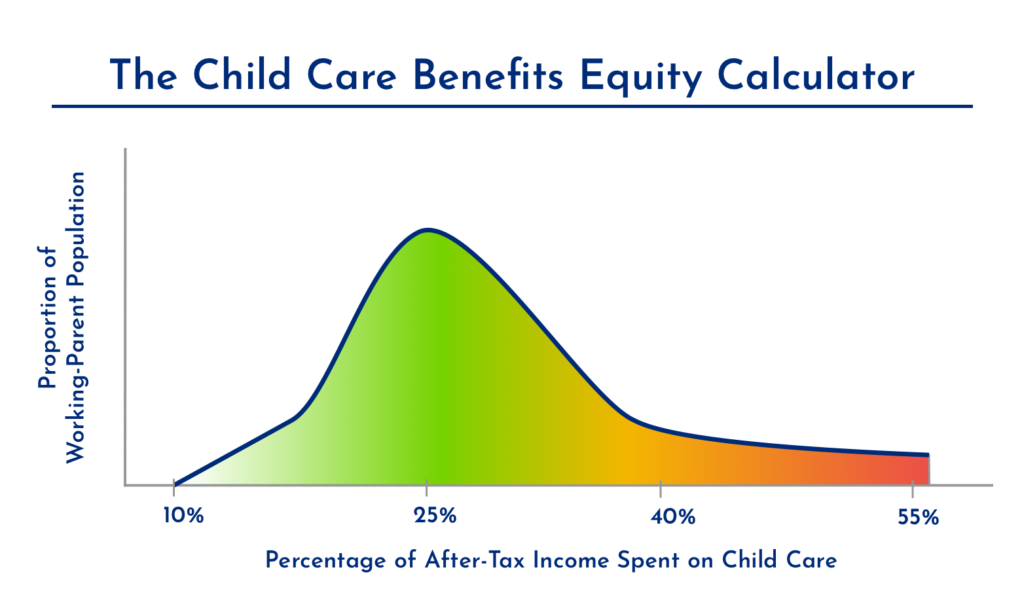
To achieve this shift, employers like Boston Children’s Hospital and others are adding home daycare solutions to their portfolio of child care benefits. These small-scale, full-time programs can be 50-60% less expensive than a nanny, and up to 20-40% less than center-based programs. And for employees that are currently working from home, the distributed nature of home daycares in the neighborhood allows parents to drop their children off at child care and quickly get back to the home office.
HR leaders that are assessing and investing in the affordable child care supports may book a call with NeighborSchools to learn how to offer home daycare benefits can help.


